How to Make a Subway Map with John Tauranac
Hear from an author and map designer who has been creating maps of the NYC subway, officially and unofficially, for over forty years!


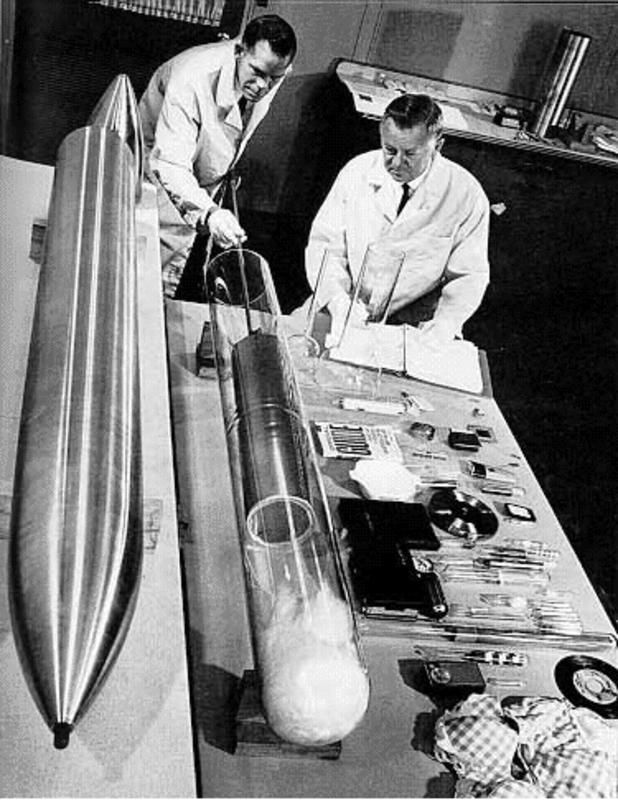 Photo via Wikipedia Commons, The Story of the Westinghouse Time Capsule
Photo via Wikipedia Commons, The Story of the Westinghouse Time Capsule
All across New York City, vestiges of the past can be found: some are hidden in plain sight or placed on public display, while others are buried way beneath the ground. Here we take a look at 12 unique time capsule that have been unearthed over the years.
From the Westinghouse Time Capsules (to be excavated in 6939) to one of the oldest known time capsules, these artifacts of an earlier time help us to understand what the city was like in the past. Additionally, this list includes newer capsules that were recently buried, which will provide future New Yorkers with a glimpse into our current way of life:
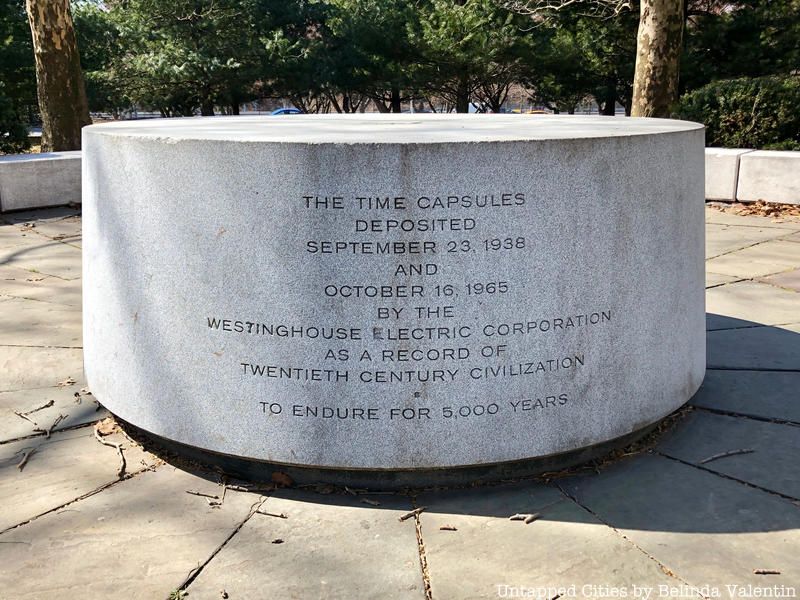
Created by Westinghouse Electric & Manufacturing Company for the 1939-1940 World’s Fair, the first of two “time capsules” in Flushing Meadows-Corona Park was considered an engineering and scientific feat. Though certainly not the first collection of items curated to be saved for posterity, the World’s Fair time capsule was the first to be named as such. Engineers used the most advanced technology available at the time to make the capsule as durable as possible. The artifacts are encased in a seven foot tall, 800 pound metallic cylinder shell made out of a state-of-the-art metal alloy of copper and chromium, called Cupaloy. This alloy is highly resistant to corrosion and engineers believed that it would withstand the forces of nature for 5000 years.
Buried along with the capsule is a pamphlet with specific instructions on how to find it. The creators took into account the loss of constructed landmarks, the failure of geo-political systems, and even shifts in the earth’s poles that would render coordinates useless. In any of these cases, as per pamphlet instructions, future generations can use the stars and alignment of the planets to find the capsule.
In the year 6939, whoever recovers the capsule will be rewarded with artifacts that would have been found in a typical 1930s home. Some of the thirty-five items enclosed are copies of Life magazine, a Sears Roebuck catalog, cigarettes and seeds of wheat, corn, alfalfa and soy.
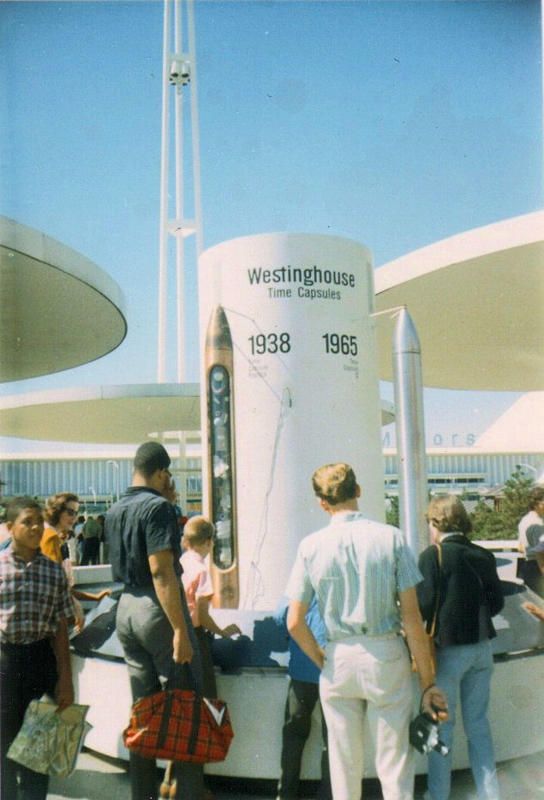
Photo from Wikipedia Commons, Austin Hall
On October 10, 1965 a second capsule containing items that represented the current state of home life, science, space exploration, atomic energy, and art, was buried alongside the 1939 capsule to commemorate the 1964-1965 World’s Fair. Items in the 1964 version include credit cards, contact lenses, an electric toothbrush, antibiotics, synthetic fiber, and of course, a Beatles record.

In January 2013, a construction worker taking part in the expansion of the Green-Wood Crematory and Columbarium discovered a metal box with the inscription “Green-Wood Cemetery 1838-1954.” Fortunately, none of the grisly discoveries you might expect to encounter were found in the box. Instead, the small metal container held a series of 19th century books written by the first cemetery historian, Nehmiah Cleaveland.
Titles found included, “A Handbook for Green-Wood”(1867) and “Green-Wood Illustrated” (1847). Though the metal box was still air-tight, condensation trapped inside the plastic coverings of the books caused significant water damage. Retired Brooklyn College professor Anthony Cucchiara, an expert in dealing with water damaged artifacts, attempted to salvage the books by having them frozen. Despite Cucchiara’s best efforts, the pages of the books were a lost cause. Luckily, some of the titles found are still in print and part of the current Green-Wood collection.
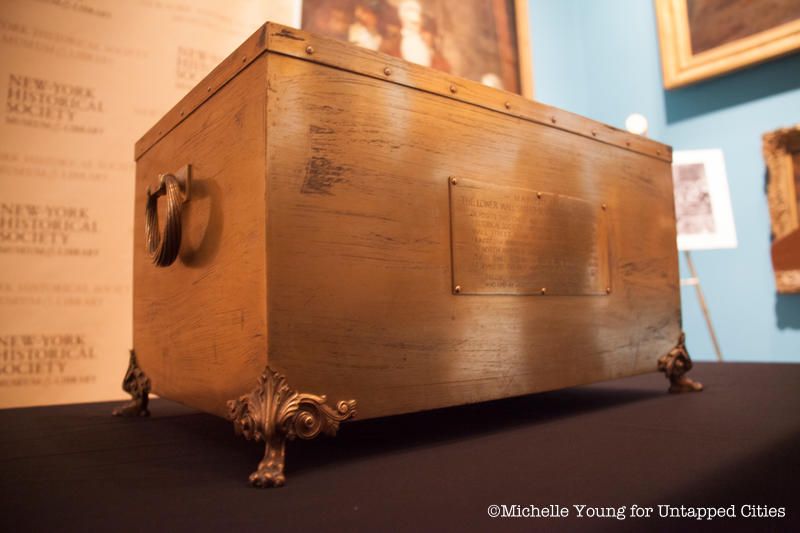
In an October 2014 ceremony at the New-York Historical Society, one of the oldest known unopened time capsules became one of the oldest, opened time capsules after five minutes of bolts being carefully unscrewed, . This unique artifact was created for a parade in lower Manhattan in 1914. The celebratory parade was in honor of the area’s historical significance in the tea and coffee trade and the revolutionary war. The parade ended at 91 Wall Street, where a bronze plaque was unveiled, marking the site as the former location of the historic Merchants’ Coffee House. The next order of business was the presentation and sealing of an ornate bronze box decorated with faux-rope handles and paw-shaped feet. Though this box wouldn’t be called a “time capsule” until the term was coined at the 1939 World’s Fair, it contained various documents to be preserved for future generations. The box was hammered shut with bronze nails and a silver hammer by the ex-mayor of New York and former president of Columbia University, Seth Low, and entrusted to the president of the New-York Historical Society.
The box was supposed to be opened in 1974, but due to a cataloguing error, the box went unnoticed until the 1990s. Since the box had already missed its due date by twenty years, the opening was further postponed until October 8th 2015, as a way to mark the 400th anniversary of the Dutch colonization of the New World.
At the highly anticipated opening, the contents of the box were revealed to be various documents wrapped in brown paper or placed in envelopes, labeled with neat cursive handwriting. Among the documents were a copy of the New York Herald from May 15, 1914, a color copy of the 1914 Almanac, a photograph of the daughter of John Jay, and a letter extolling New York and the Merchants’ Coffee House as the true birthplace of the revolution.
While instructions called for the items to be returned to the box and resealed for another 100 years, the Historical Society has determined that the items will be more useful as artifacts to be examined. Student historians curated a time capsule of their own that will be housed at the Historical Society and, hopefully, opened in 2114. Items from the new time capsule include a New York Public Library card, an Amazon Kindle, an Obama campaign button, a Purell hand sanitizer, a MetroCard, a gay pride T-shirt and popular websites preserved on a flash drive.
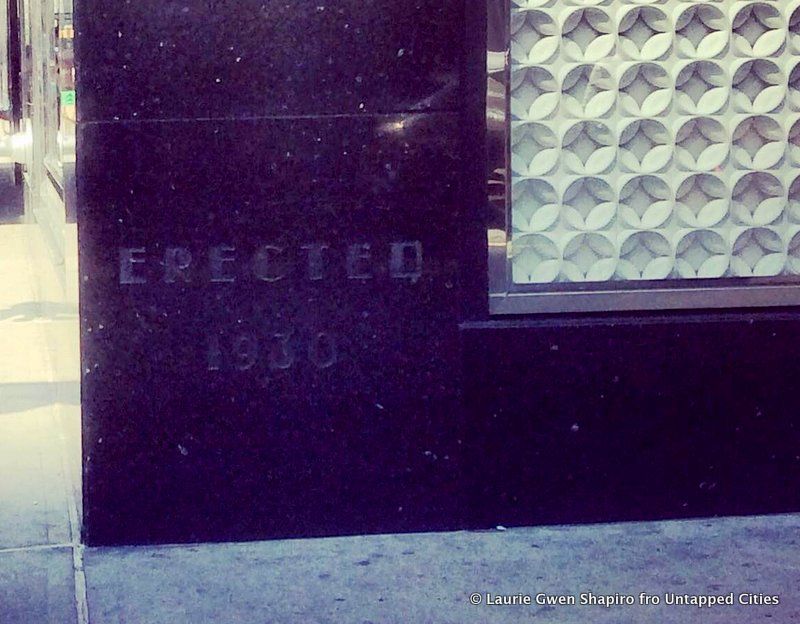
The shelves of Bloomingdale’s flagship store on Lexington Avenue are stocked with luxury goods, but the most valuable products may be hidden beneath its decorative window displays. According to multiple newspaper records from the time, a ceremony attended by Samuel J. Bloomingdale, took place on April 23, 1930 at which two boxes were entombed in the store’s cornerstone to commemorate an addition to the store.
While the contents of the boxes are unverified, reports say there are the obligatory staples of coins and newspapers and potentially among some other “unusual miscellany,” a baseball signed by Babe Ruth. The Babe Ruth ball is the buzziest item of the purported collection which is also believed to include a golf ball signed by top amateur golf player Bobby Jones, a horseshoe, a telephotograph of Charles Lindbergh and his wife, and predictions of the future of art, literature, religion, science, politics and sports written by prominent Americans such as former President Calvin Coolidge and Henry Ford. The baseball alone could fetch up to $500,000 at auction, but the value of the capsules may significantly increase if the baseball is accompanied by three $25 banknotes.
In 1930, with an anticipated opening date of April 23, 2130, three $25 banknotes were projected to be worth $614,400 after 200 years of compound interest, a fortune at the time of the depression. Considering various factors, high school statistics instructor and adjunct professor at Princeton Adam Shrager, did some calculations for Untapped Cities and estimated the worth of the banknotes to be anywhere from $554 to nearly $12 million dollars in today’s money.
Though the price tag alone would inspire most to rip that cornerstone right off, Bloomingdale’s officials have no intention of opening up the boxes or investigating their existence until 2123. Read more about the time capsules here.
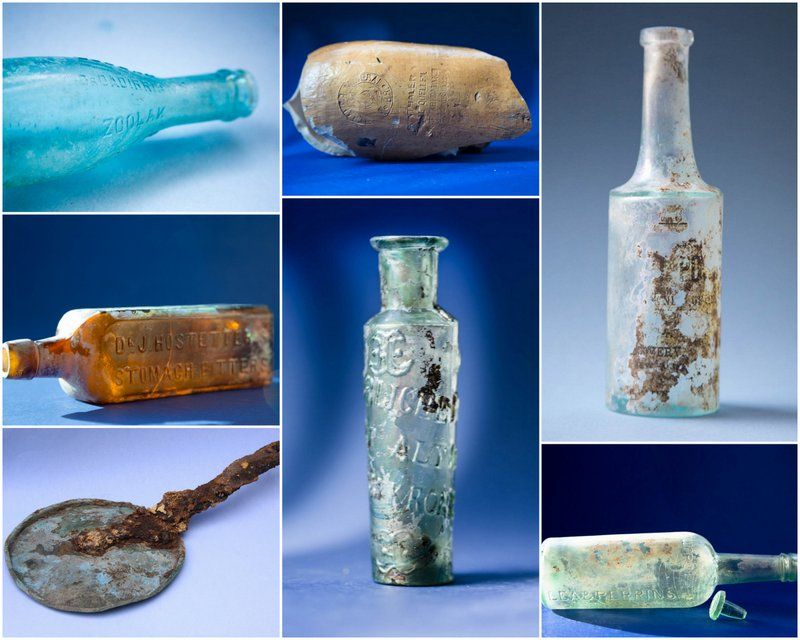
Photos courtesy Chrysalis Archaeological Consultants
Depending on the decade, or century, pedestrians walking by 50 Bowery in Chinatown may have passed a tavern, a beer garden, a theatre, a Popeye’s or a Duane Reade. The address originally belonged to the Bull’s Head Tavern, a popular watering hole for merchants, butchers and cattle brokers in the mid-1700s. The Bull’s Head Tavern became infamous when George Washington led troops there to celebrate the withdrawal of English colonials from New York in 1783. After many reincarnations 50 Bowery is now a 22-story hotel built by the Chu family, a prominent real-estate force with roots in Chinatown that date back to 1949 when Joseph Chu settled in the area. Since 50 Bowery sits on a spectacular fossil record of Chinatown, construction at the site was controversial, but the Chu family are fascinated with the history of Chinatown and are longtime supporters of The Museum of Chinese in America, MOCA. Alex Chu told Voices of New York, “We want to give back to the neighborhood. And 50 Bowery is a platform for us to do so.”
Before the construction of Hotel 50 Bowery took place, an excavation of the site was conducted and archaeological documentation done by Chrysalis Archaeological Consultants uncovered a plethora of historical artifacts. Many glass bottles that used to hold a myriad of substances were found at the site including bottles from a German mineral water company, Brooklyn-based North American Brewing Company and a kefir-like milk drink called Zoolak. The team also dug up plates and colorful tiles from the historic Atlantic Garden beer garden. The Chrysalis team were inspired by their finds to concoct their own bitters based on historic recipes. In addition to the treasures found in the ground, there was an 1826 time capsule sealed on-site during the construction of the theater but was never found.
At the behest of MOCA, the Chus put together a time capsule that was placed at the foundation of their hotel. The capsule contains some items from the excavation such as an empty bottle of Dr. J. Hostetter’s bitters and contemporary pieces of life in Chinatown such as copies of Sing Tao Daily, The New York Times and Time magazine, menus of Chinese restaurants, and some Golden Venture and 9/11-related collections from MOCA.
MOCA will permanently occupy a 1,500-square-foot exhibition space on the second floor of the hotel where visitors can view items from the excavation of 50 Bowery for free. The aptly named “Heart of Chinatown” exhibit connects visitors to the culture and the history of the surrounding community.
Danceteria, a club that sent “shockwaves” through the 1980s party scene and helped launch the explosive careers of acts like Madonna and the Rolling Stones, left some New Yorkers shaken when a bomb shaped time capsule, planted by club promoters, was found at a lower Manhattan construction site. In July 2017, an item shaped like a bomb from World War II was unearthed by construction workers, causing the closure of a portion of 21st Street and the evacuation of nearby office buildings. NYPD bomb squad units were called to the scene where the innocuous capsule was buried in 1985.
Since the discovery, cartoonists James Romberger and Marguerite van Cook have claimed responsibility for the controversial stunt. Posters from the 1980s advertising the burial list its contents as, “Priceless Art for Posterity, Memorabilia from the Stars of the Scene, Trash of the Treacherous, Souvenirs Not Sold Anywhere.” According to van Cook’s Facebook page, some of the items enclosed in the bombshell are “one of Diana Ross’ fake eyelashes and Chi Chi Valenti’s g-string among thousands of messages to the future.” On October 25th, 1985 the capsule was buried in an alley adjacent to Danceteria with a sign reading, “To all you Futurists, 10 feet opposite this sign is a time capsule. Please open it in 10,000 years.”
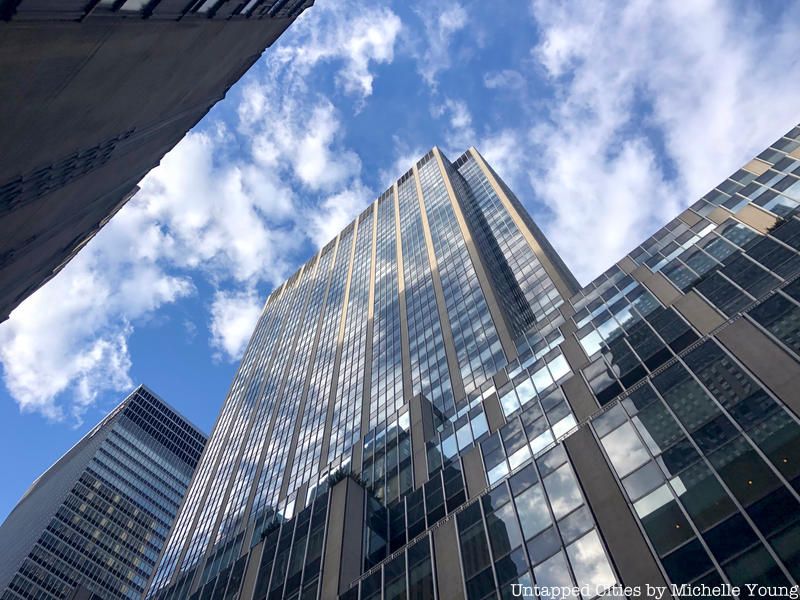
Before leaving its eponymous midtown office building for new digs in lower Manhattan in 2015, TIME cleared out everything, including a copper time capsule sealed in the building’s 800 pound cornerstone. The capsule had been sealed in the building for the 55 years TIME had occupied it. While most cornerstone capsules don’t have a set opening date, the TIME capsule is scheduled to be opened in 2023, on the company’s 100th birthday.
At that time the original items will be replaced or supplemented by contemporary objects and the capsule re-opened in 2123. The capsule, which was sealed on June 23,1959, contains thirty pounds of documents including two LIFE books, other Time Inc. publications, microfilm information about Rockefeller Center, and a red pencil, the type preferred by original TIME editors.
When a new YMCA Community Center opened in Coney Island in 2013, the new beginning was celebrated with a look back at the history of Brooklyn’s iconic beachy playground. The items chosen for the time capsule embody the fun and eclectic spirit of the community. Inside, there are recent copies of local newspapers, a bobblehead and ball from the Brooklyn Cyclones, posters from the Mermaid Parade, beach sand, a piece of the Boardwalk, T-shirts from the Brooklyn Nets and the Coney Island Freakshow, and of course, a cup and menu from the famous Nathan’s.
While there is no set date for the capsule to be opened, spokeswoman Ellen Murphy told Brooklyn Daily that the YMCA’s lease is up in 40 years, but that many Brooklyn YMCA locations have lasted more than a century.
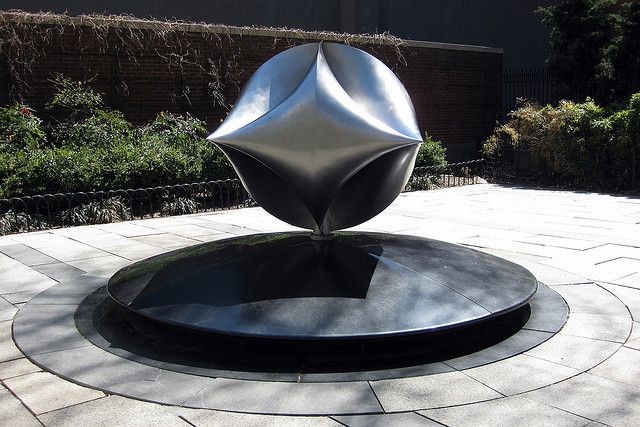
The time capsule at the American Museum of Natural History. Image via Flickr user Wally Gobetz
In January 1999, editors of The New York Times Magazine launched a contest whose winner would have his work on display for a millennium. Forty-eight designers, architects and engineers from around the world were asked to submit proposals. In March of the same year, proposals from ten finalists were put on display as part of an exhibition at the American Museum of Natural History called ”Capturing Time: The New York Times Capsule.” Of those ten finalists, the winning design was a 5′ x 5′ x 5′ sculpture of welded stainless steel created by Spanish architect-engineer Santiago Calatrava. Calatrava most famously designed another important New York structure, the Oculus, a transportation hub and retail center at the site of the World Trade Center. Santiago’s design is on permanent display at the museum’s plaza on Columbus Avenue.
The creation of the “Times Capsule” coincided with the publication of NYT Magazine’s final millennium issue, which is sealed within Santiago’s sculpture along with the five other millennium issues. In order to ensure the preservation of the magazines, they are sealed within the sculpture in two formats. One copy of the magazines is a boxed set of reproductions printed on archival acid-free paper and the second is made up of a series of microscopic images etched into a two-inch, wafer-thin metal HD-Rosetta data disc. Also found within Calatrava’s steel encasement are samples of popular music and a five minute sound portrait of New York that was recorded at 9:09 a.m. on 9/9/99. The capsule is set to be opened in the year 3000.
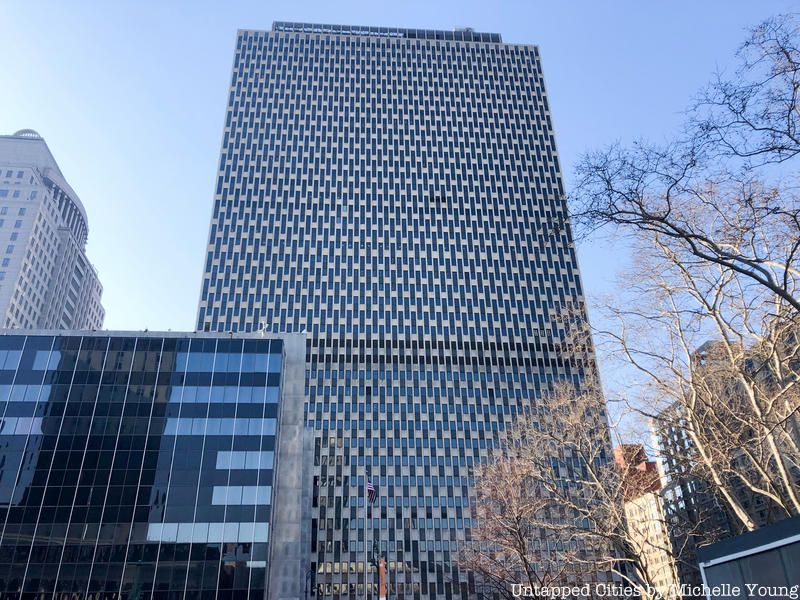
Digging anywhere in New York is bound to produce an interesting find. In 2012, during a renovation project at Lafayette Plaza in lower Manhattan, workers found a small copper box behind the cornerstone of a federal building. The box had been filled with documents and sealed in 1968. Its contents included black and white pictures of the construction of 26 Federal Plaza, newspaper articles that chronicled the process, a letter from the Regional Administrator commending the project team as well as the front page of major newspapers, The Wall Street Journal, New York Times, and New York Daily News, each dated April 30, 1968.
The project manager of the 2012 renovation project, Ali Tabar, got a kick out of comparing photographs of construction tools from 1968 to the present day implements, noting, “we can see how much progress we have made in developing newer and better technology.” With help from the National Archives and Records Service, the contents of the 1968 box were resealed and reburied beneath the stones of the newly renovated plaza along with items from the 2012 project such as a sustainability scorecard for 26 Federal Plaza, pictures of the World Trade Center towers (dated 2001) and a rendering of the complete new 1WTC, a New York Times front page from 9/11/12, and a 9/11 commemorative coin. The boxes have no set opening date. Rather, they’re waiting to be found by perhaps another construction crew who can marvel at the progress made by their time.
Billionaire entrepreneur Richard Branson has left his mark on New York City in many ways. On his blog, Branson reminisces on the first Virgin Atlantic flight landing in New York City (technically New Jersey’s Newark Airport), the Virgin megastore in Times Square and a tank rolling through the busy streets of Manhattan for the launch of Virgin Cola.
Branson’s latest venture in the Big Apple is a new hotel on Broadway. At the groundbreaking ceremony in 2015, Branson buried a time capsule to commemorate the relationship and history the Virgin company shares with New York City. Inside are various articles representing the Virgin empire such as earphones and a JFK boarding pass from a Virgin flight, keycards from Virgin hotels, a CD from the Virgin store, a can of Virgin cola and a photo of Branson outside his former Times Square Mega store. Branson writes that his intent is “to build a timeless hotel, so hopefully that capsule will never see the light of day again.” Construction of the new hotel is set to be completed in 2018.
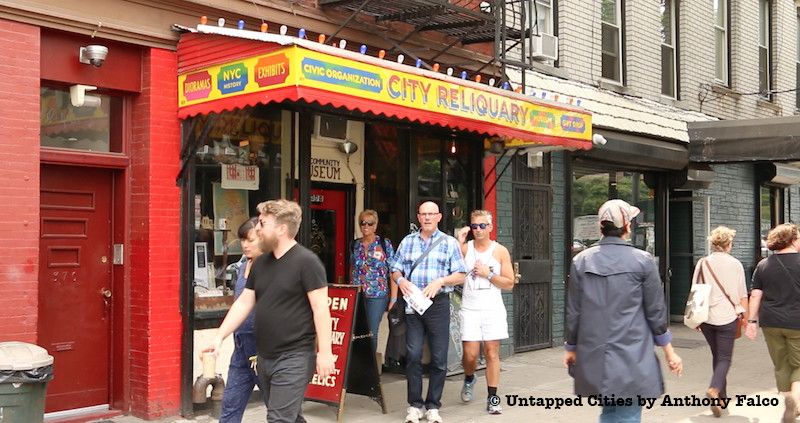
In the spring of 2015, students at the Children’s Workshop School in the East Village turned their classroom into the site of an archaeological dig. Inspired by the findings of fourth grader, Bobby Scotto, and led by their teacher Ms. Miriam Sicherman, students dug beneath the floorboards of their classroom closet pulling out treasures such as wheat pennies, bits of school assignments, 1920s red cross pins, and a toy watch.
While most teachers might have scolded students for snooping around and playing on the floor, Ms. Sicherman saw their discoveries as a learning opportunity. Ms. Shicherman explained to students that the 1943 pennies they found were made of steel because of the scarcity of copper during World War II, and how some of the items might have belonged to children who came to New York through Ellis Island. The mystery of where these items came from and how they wound up underneath the floorboards of schoolroom closets, is still unsolved. The building was constructed in 1913 but it is unclear when the floorboards were installed.
Ms. Shicherman runs an Instagram account to catalog her student’s finds and in 2017 the children’s unearthed artifacts were formerly featured in an exhibition at City Reliquary called “Closet Archaeology: An Accidental Time Capsule” in the summer of 2017. The “Closet Archeology” exhibit will be on display again at the Ace Hotel. An opening ceremony will be held on March 8th, 2018.
Next, see our past coverage on New York City’s time capsules.
Subscribe to our newsletter